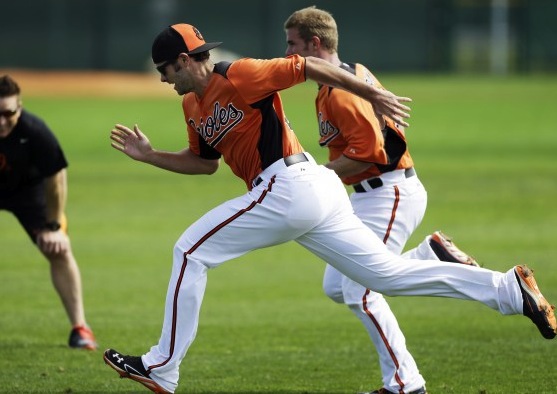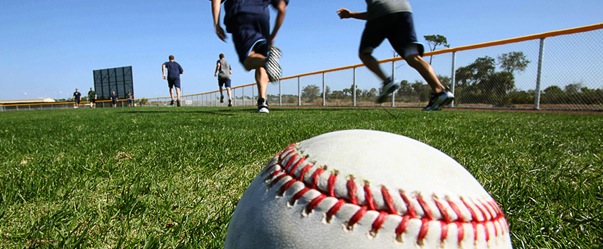
Photo by Charlie Neibergall/AP
Sprinting speed is a priceless attribute to have on the baseball diamond. Speed is so important to baseball scouts and coaches that the 60-yard dash is the first thing evaluated at every showcase and tryout. The “60” can give coaches and scouts a solid idea of a player’s home to first speed, base stealing ability, and running speed from second base to home on scoring plays.
Most tryouts give players two attempts at the 60-yard dash, often running two players at a time. Run a time under seven seconds and coaches will take note. Over seven seconds? Then you’ve got work to do.
So how can you stand out by running a fast 60-yard dash?
Running Technique
One of the first things you can work on is your running form and technique. Better technique translates into more efficient sprinting. And when you are more efficient, you waste less effort and energy to accomplish your task. Here are two key elements in having better sprinting technique.
- Arm Swing – Your arms should be bent at the elbow roughly 90 degrees. As you sprint, your arms should move from the shoulder joint and in a straight forward and backward motion keeping the elbows tucked close to the body. Any lateral movement with the arms can cause trunk rotation and will only serve to waste energy and make you less efficient in sprinting straight ahead. As your arm moves forward, think of driving your hand past your hip and up to face level. When your arm moves backward, pretend your hand is the head of a hammer and you are driving a nail down into the ground. Straight forward, straight back.
- Knee Drive – Many ballplayers think they need to take short quick steps. Unfortunately, they just end up taking a lot of steps and do not cover much ground. Aggressive knee drive forward (not upward) elongates stride length will help you gain more ground with each step. This will also allow the athlete to apply more power to the ground at foot strike, propelling him forward.
Strength Training for Speed
While running mechanics are a big part of running faster, having a solid strength program can help you build muscle and power that will also translate to speed.
There are many ways to incorporate strength training into a baseball training program, but to really focus on developing speed, baseball players need to perform plyometric exercises and lift heavy.
Plyometric exercises can help train muscles to fire quickly and explosively. Ballplayers can perform 2-3 plyometric movements per training session, 2-4 times per week. Reps are usually kept relatively low to focus on power output and good form.
Examples of plyometric exercises include:
- Jump Rope
- Box Jumps
- Squat Jumps
- Broad Jumps
- Single Leg Bounds (linear and lateral)
When it comes to lifting heavy, baseball players should incorporate squat variations and deadlifts, as well as single leg lifts such as lunges and step-ups. With heavy weight, you should be performing 3-6 sets of 1-5 reps for squats and deadlifts. For exercises such as lunges and step-ups, stick to the 5-8 rep range. Strong hamstrings are also a must and can be strengthened by incorporating RDL’s and glute/ham raises.
Conditioning Drills for Improving Speed
Finally, baseball conditioning is another way to work on speed development. Long distance running will not help you in your pursuit of speed. There is no baseball-specific value in running long distances. Remember, recording a fast 60-yard dash time is about being fast and explosive, not slow and steady. You can check out these three conditioning drills that are better than running poles, and remember to focus on arm swing and knee drive.
 60-Yard Dash Secrets
60-Yard Dash Secrets
These are only a few tips to help you in pursuit of a faster 60-yard dash time. If you are looking for more ways to help shave a few ticks off your 60, check out 60-Yard Dash Secrets. With this program you’ll learn how to adjust your steal-start technique for improved quickness, why the 60-yard dash is different than other speed tests, how to manipulate the variables in your favor, and how to improve your running mechanics even more for better 60 times, improved base stealing ability, and a faster home to first time.
Good luck!


